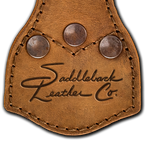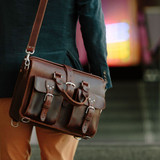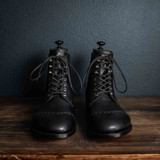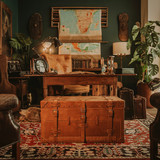The Munson Last: Resculpted For Elegance
The Rarest and Healthiest Shoe Shape on Earth
The Munson Last is the most consequential and influential last in history. Hundreds of millions of boots were made on one of the 6 generatoins of The Munson last for all U.S. military from 1912 to 1970 and eliminated almost 100% of foot problems in the military. Unlike most modern lasts that prioritize aesthetics over anatomy, It was designed to mirror the actual shape of the human foot under motion, which is the reason these boots feel broken in faster and keep the body in healthy alignment.
The Start of the Munson Legacy
In 1892, Dr. Edward Lyman Munson graduated from Yale School of Medicine where he studied Physiology and the Biomechanics of the foot. He joined the Army in 1892 and In 1908, was tasked with developing a new shoe for the entire U.S. military to address the huge problem of foot pain among both enlisted and officers. Dr. Munson notes, “The army which marches best, other things being equal, is the successful army. Mobility is the key of military success…” The mililtary genius, Colonel Forrest, defined the art of war as "getting there first with the most men".
From 1908 to 1912, Dr. Munson and his Shoe Board nerded out on feet. They started their work by having a battalion of infantrymen march 8 miles, rest 24 hours and march back 8 miles. Dr. Munson recorded,
“On the first day, 30 per cent, and on the last day 38 per cent, of the command were found to have severe foot injuries, some requiring hospital treatment. The feet of many others were reddened and sore from this short march, and a few more miles of marching would have converted these painful areas into blisters, and small blisters into large ones.”
Over the next 4 years, they X-rayed, examined and analyzed the feet of 2000 soldiers while barefoot, shoed, sitting, standing and with and without 40 lb. packs on their backs.
By the late 1800s, orthopedically shaped shoe lasts with various biomechanical shoe features had started to be developed in the New England area. Dr. Munson examined and tested thousands of the most physiologically correct boots of the time on soldiers to see what worked and what didn’t and then tweaked them to eventually come up with, what many say is the most comfortable, orthopedically sound and most physiologically correct shoe ever made. They were built on the Munson Last.
The Soldier's Foot and the Military Shoe
In 1912, to confirm their work, the Shoe Board sent eight companies (about 1137 soldiers) on a march of 120 miles over a 9 day period, but only 379 of the men wore the newly perfected Munson shoe. Of those wearing the new shoe, Munson wrote there were zero foot problems.
“The full equipment, with ammunition, was carried. Not a single man failed to complete each day's march as a result of foot injury…The feet of each man were inspected by the board after each day's march, and even the slightest pinhead blister was noted on the man's record card. Many of the injuries so reported were so trivial that at inspection on the following day they were not apparent and even their former location could scarcely be determined.”
Dr. Munson wrote several times in his book The Soldier’s Foot and the Military Shoe that not only did the newly designed boot help the soldier’s feet get back to their original strength, but they also corrected almost 100% of pre-existing foot problems from soldiers wearing ill-formed shoes that deformed their toes and flattened or weakened their arches and ankles. Dr. Munson wrote,
“Given a shoe as anatomically correct as the one last adopted… the problem of foot injuries should largely cease to trouble in our army.”
“But the Shoe Board, in its study of thousands of feet, had naturally arrived at fairly positive conclusions of its own in respect to the average amount of foot deformity present in American soldiers, and the extent to which its natural correction under favorable conditions might reasonably be anticipated.”
The Honor to the Man
This new boot was so successful that the U.S. military used it from 1912 to about 1970 because it gave them such an advantage in war and likely saved the lives of thousands of soldiers and clearly helped us get more soldiers to the battle lines to win. Every war movie or photo of a U.S. soldier you see from those years is wearing a Munson boot.
A little known fact, during WWII, the Germans sent spies into England to try to steal their military’s last, which was based on the principles of the Munson Last and shoe he shared with our allies there. In fact, the British Crown was so grateful for General Munson, they honored him with The Most Honourable Order of the Bath for his contribution to Great Britain, which is rarely awarded to a non-British citizen. The U.S. Government honored him with the Distinguished Service Medal back when that was rare. Where he did his work in Fort Leavenworth, Kansas, they honored Dr. Munson by naming a hospital after him, The Munson Army Health Center.
Anatomical Shape And Biomechanical Features
Most lasts are shaped only for the shoe to look good and then expect the feet to form to the shape of the shoe, without concern for the anatomy - the shape of the ligaments, tendons and muscles as a whole, and biomechanics - the way the foot was designed to move. But Dr. Munson was not trying to win any fashion contests. He designed his physiological last to fit around the anatomical shape of the foot with a slight twist to mimic and encourage the natural movement of a barefoot step.
And since Munson designed the shape of the shoe to wrap around the form of the foot like a sock, it didn’t require a break in period and was comfortable from step one, except for, in some cases of soldiers with flat or high arches, Munson recorded that it took a little time for some of the soldier’s feet to correct back to their natural strength and shape, but once they did, the complaints went away.
The 9 Key Distinguishing Features of the Munson Last and Shoe
All of these intentional features kept the bones in perfect alignment and the foot and arch muscles strong. The last thing Dr. Munson wanted was for the ligaments, tendons and muscles to stretch out and become weak in the arch.
- A wide toe box for the foot to expand and contract.
- A straight inner line from the heel to the toe so the big toe is not pushed out of alignment.
- It is a twisted last that makes the foot step like it would when barefoot.
- A snug heel to lock in the foot to reduce injuries.
- A snug waist to work with the heel to fix the foot in place.
- A very narrow arch so leather wraps and supports the arch from above while allowing it get strong through exercise with every step.
- A low toe spring so it doesn't keep the foot in an over-extended state yet not so flat that it hits rocks and trips.
- Low heelstack so the majority of support would not shift forward to be over the fairly delicate arch.
- Zero arch support from below so the arch could still expland and contract all day long to stay strong.
Biomechanical Characteristics
But it wasn’t just the anatomical last that mattered. He was concerned with the interconnected movements (biomechanics) of the feet, ankles, knees, hips and lower back that he had learned about at Yale School of Medicine. He knew the muscles, tendons and ligaments couldn’t be pushed or stretched out of their natural locations and they needed to stay strong by exercising and functioning, like they naturally do when we walk barefoot, and the toe bones needed to stay in perfect alignment with the foot bones. Dr. Munson was adamant that the sole not be too stiff and that the toe area be flexible so the muscles would not atrophe from lack of movement.
Dr. Munson wrote,
“It is quite apparent from the foregoing that the foot is not at all the rigid structure popularly supposed, to be carelessly jammed into any sort of container, irrespective of the size, shape, and character of the latter. On the contrary, it is seen to be a highly developed member of complex formation and intricate function, every factor of which needs thoughtful consideration in determining its proper covering.”
So, Dr. Munson built a biomechanically correct shoe around the anatomically correct Munson Last by incorporating the 8 key elements the Shoe Board confirmed make an orthopedically sound shoe. He documented these in his book, which, everytime I read it, I feel like I am reading the work of my long lost brother.
Why Don't More Companies Or The U.S. Military Use the Munson Last?
So, if the Munson last is so amazing, why doesn’t everybody use it? There are several reasons:
-
There hasn’t been demand because the importance of its orthopedic shape has generally been lost until now.
-
Because the lace up officers style boot was seen as an old man’s out of fashion shoe starting in the 1960s. That style was no longer in demand and so the factories that were tooled up and able to make them in volume shifted to making more en vogue dumbed down shoes and the information on how to rightly make these boots was generally lost.
- The U.S. Military shifted contruction to a "Jungle boot" which was more suitable for the wet and steamy Vietnam War where boots needed to dry out faster. When that war was over, the new style of boots were being easily made and the value of the anatomical shape and the biomechanical features had been lost. Foot problems have since returned to the military, along with all of the problems of the feet, knees, hips and lower back that the Munson boots had eliminated. Hopefully, someone in charge will read this and bring back the Munson Last to the Military.
-
People think they’re ugly. There are six generations of the Munson last. Approx. 1912, 1920, 1931, 1943, 1949 and 1959. The first three generations of the last had a more elegant flatter toe to wear in battle and also to be polished and worn with a dress uniform. We know of no other existing early generation Munson Last anywhere. The latter 3 generations of the Munson last are the only ones that shoe designers can find to form shoes around and those lasts have a very round and bubbly clown shoe toe. They are good shapes, but were modified to fit thicker socks for extreme cold weather in WWII and the Korean War and were dumbed down for ease of manufacturing. Our shoes are based off of the attractive 1st and 2nd generations of the highly orthopedic Munson last.
-
Greed. There is more money to be made by selling large volumes of low priced low quality shoes than small volumes of high quality shoes, so not many people offer them.
-
The last is asymmetrical and twisted to swing to one side unlike all other lasts that are nearly perfectly symmetrical for ease of manufacturing. Our shape requires a high level of skill for the leather to be formed around the last by hand (handlasted) instead of being quickly and inferiorly machine lasted and handlasting takes longer, which is more expensive to do. To read why technically handlasting makes a shoe stronger, click here.
-
Not many factories know how to handlast even though it makes the leather look better for years longer. Because the firmness and elasticity of leather varies with each individual piece. It should not be uniformly stretched around a last because it may be overstretched and made thinner or not stretched enough, only to be stretched out later with use. But rather, the amount of stretch should be determined by the judgment of the craftsman with what he feels as he is tugging on the leather.
-
The last has a very necessarily narrow arch which requires high skill and expensive specialized machinery to sew with consistent quality.
-
There is a part of the shoe that takes a lot of tedious concentration to build in for the twisted last to function as it was intended and very few people in the world even know it’s a thing.
-
Lasting machines are built for symmetrical lasts and ours is asymmetrical and curves from the outside in to the straight healthy inside line to keep the bones in alignment and is twisted, so the machines just can’t do it.
-
Most designers create a foot box and then insert the shape into it while we create a leather sock to wrap around the foot.
-
Machines won’t wrap leather around the arch like ours do.
-
Our last was sculpted to be beautiful and curvatious so it would wrap the foot and that’s hard to build.
Most just take a last that’s available and make it work. Historical lasts in their archive, none will be next level. Where are you going to find the orthopedic sculptor to carve you something beautiful. One in England. One in Germany. Some in Italy. They will pick you out one from their archive.
Our shoe is based off of the 2nd and 3rd generation military officer’s last, but Julian sculpted some slight adjustments to make the toe look more elegant while maintaining the all important orthopedic shape of the earlier lasts.
Our Beautified Elegant Shape Tried and True
Little did I know, my friend Julian, who was guiding me in our shoe designs, had been refining this most popular, tried and true and anatomically correct shoe last ever created to form our shoes around. He had resculpted certain parts of it over and over again from 2013 to 2025 to give it more elegance without detracting from the orthopedic magic. It is called the Munson Last and hundreds of millions of shoes and boots have been made on it for a reason. No other last even comes close to it for health and comfort.
Munson Family
Since my name is Dave Munson, I looked up my DNA ancestry and found that Brigadier General Edward Lyman Munson and I are relatives, traced back to his birthplace, New Haven, Connecticut. But he only had one son, who died in 1967 without having a son of his own. After all of that diligent and world changing work, Dr. Munson had no one to carry one his work. It immediately became clear that it was me who was destined to carry on the Munson legacy and remind as many people as I can of the hugely significant contribution he gave to the U.S. military and the world. Munsons around the world should be proud.









